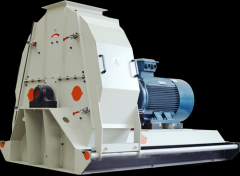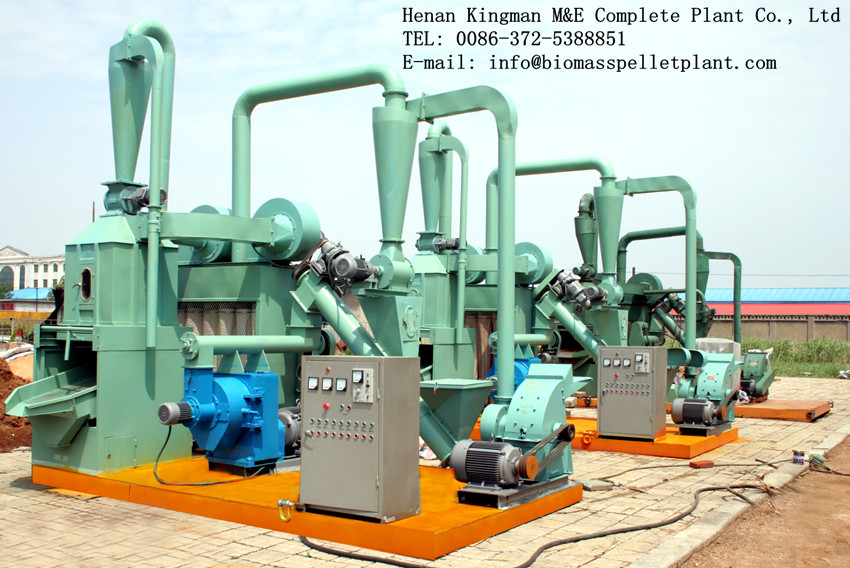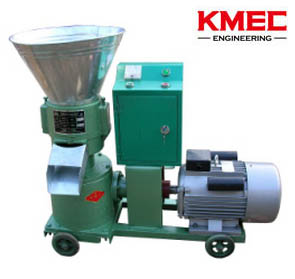The Situation and Future Development of Biomass Pellet Plant
Biomass pellet is a kind of new clean fuel which can be burnt directly. It takes sawdust, straw and other agricultural and forestry residue as raw material through crushing, mixing, extrusion and drying process. Biomass pellet has been widely used as auxiliary fuel in power plant boiler and household energy supply and heating system in Europe and America. The widespread use of the biomass pellet around the world promote the development of global pellet plant directly.
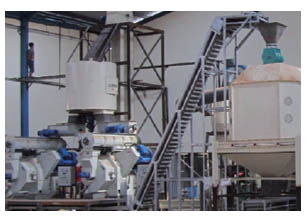
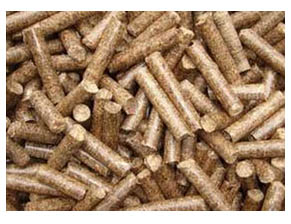
In recent years, with the continuous increasing of fossil fuels price and the continuous improvement of people's environmental protection awareness, more and more people began to turn their attention to renewable energy. Among them, biomass energy as the fourth major energy, with its renewable, zero carbon emissions and other characteristics, becomes a new energy with large potential of development. As one of the most effective forms of biomass energy use, the biomass pellet is characterized by its simple production process, suitable for industrial production, and the characteristics of the high calorific value, burning rate and the thermal efficiency that receives people’s attention. The extensive use of biomass pellet around the world promote the development of the global pellet plant directly.
After half a year’s stagnation, pellet exports from North America began to increase in the third quarter of 2014. Exportation of wood pellets from North America to Europe and Asia reached an all-time high rising 22 percent in 2014 from the previous year. The total pellet output to Europe only increased slightly, while the increase to Asia was more noticeable. Up until 2014, more than 95 percent of wood pellets leaving US and Canadian ports were destined for Europe. In 2014, Shipments from the US were up 40 percent year-over-year, while Canada exported 6 percent less than in 2013.
The U..S overseas pellet exports rose to over 1 million tons in the third quarter of 2014. U.S. exports to Europe increased for the 12th consecutive quarter, reaching a new high of just over 1.1 million tons. While for pellets to Asia, shipped by containers from the U.S. West Coast, fell as manufacturers concentrated on seasonal local demand. By far the largest consumer of U.S. pellets that past year has been the United Kingdom, which in the 4Q/14 was the destination of 73 percent of U.S. export volumes. However, the U.K. market has not always been in such a dominant position. In 2013, the share was 55 percent and in 2012 only a modest 31 percent.
Since its founding in 2004, the Enviva family of companies has grown into one of the leading manufacturers of wood pellets in the U.S. Its first pellet plant began operations in 2007, and over the past few years, the company has expanded its production and distribution capabilities to provide increasing amounts of pellets for use at coal-fired power stations. This year alone, Enviva will provide approximately 2 million metric tons of wood pellets to the United Kingdom, Europe and Asia. Enviva primarily sells to customers in the U.K. and Europe. European demand is expected to reach 38 million metric tons by 2020, up from 9.9 million in 2013. Several recent announcements and actions in key markets highlight the growth potential in the wood pellet industry. The worldwide demand for wood pellets is projected to grow at an annual rate of more than 20 percent for the next five years, with the largest increases likely to occur in Northern Europe, South Korea and Japan.
Portucel is an integrated forest, pulp, paper and energy company, with its activities based at three large-scale production mills in Portugal. Last month, Portucel Sporcel Group broke ground on its Colombo Energy pellet plant in Greenwood County, South Carolina. This estimated $110 million global investment represents an important development in the company’s expanding bioenergy business. According to a Portucel spokesperson, the opportunity to expand the company’s biomass business in the U.S. was presented on special conditions for pellet manufacturing, including raw material availability, energy costs and good infrastructure. The spokesperson added that the plant will be equipped with advanced abatement equipment for environmental emission control, and its environmental performance will rival similar plants in the U.S. The company’s first U.S. pellet plant will be located in Greenwood County’s Emerald Road Industrial Corridor. The location in Greenwood allows the facility access to the surrounding forested area. In return, the facility is expected to create 70 new, local jobs. Once fully operational, the facility will have the manufacturing capacity to produce 460,000 tons of pellets annually. Scheduled completion is in the third quarter of 2016.
With over 20 new export-oriented pellet plants being built or having credible plans to operate in the next two years in the Southern States, further significant growth in North American pellet exports can be expected.
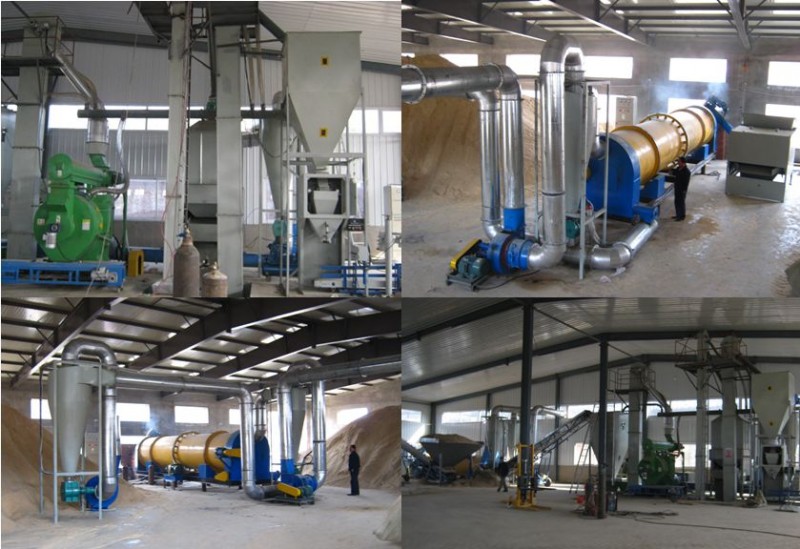
Read:How to start a pellet plant
Total Canadian overseas pellet exports rose slightly in the third quarter of 2014 from the previous quarter, but they were still 15 percent below their high of over half a million tons in the last quarter of 2013. Shipments from both Western and Eastern Canada to Europe fell in the first three quarters of 2014; in the third quarter of 2014, shipments were at their lowest level since 2011. Export volumes for the Asian market have followed a more positive trend, with increased shipments for six consecutive quarters. The major destinations for Canadian pellets in 2014 were in ranking order, the United Kingdom, the U.S., Italy and South Korea. Five announced pellet plants will start commercial operation late in 2015 or early 2016. There are currently plans to add over 800,000 tons of pellet capacity in the province during 2015/16 with South Korea being the target market.
Groupe Savoie Inc., a hardwood products supplier in New Brunswick, Canada, recently announced that it plans to double the volume dedicated to the domestic side of its pellet production at its Saint-Quentin pellet plant in the coming year. This company decided to increase pellet volume locally to address the shortage of pellets experienced over the winter, due to the compounded problem of unseasonably cold temperatures and seasonal customer buying patterns. Over a $1 million investment in the pellet plant will be made to maximize its output. The investment will include changing out a burner to increase the drying capacity, and some other equipment.
On the export side, Groupe Savoie plans to maintain current export levels because of the different fibers used to produce foreign and domestic pellets.In 2014, according to the vice president of marketing and development with Groupe Savoie, estimates the company produced 70,000 tons, 65 percent of which was exported to European customers. The company plans to continue to export approximately 45,000 to 50,000 tons, but will add another 20,000 to 25,000 tons of pellets on the domestic side.
According to the report, the EU is the world’s largest wood pellet market. The EU produced 12.5 million metric tons of pellets last year, with production expected to expand to 12.8 million metric tons this year and 13 million metric tons next year. Imports reached 6.55 million metric tons last year and are expected to growth to 7 million metric tons this year and 8 million metric tons next year. Consumption was 18.7 million metric tons in 2014, and is projected to grow to 20 million metric tons this year and 21 million metric tons in 2016, with equal shares expected to go to industrial and household use.
The industrial use of pellets in the U.K. is estimated to currently be about 6 million metric tons per year. In Denmark and Belgium, industrial use is currently a respective 2 million metric tons and 1 million metric tons per year. Germany is expected to be the EU’s top pellet producer this year, with 2.3 million metric tons of production, followed by Sweden, France, Lavtiva and Austria. The U.K is expected to be the top European pellet consumer this year, with 6 million metric tons. Italy, Denmark, Germany and Sweden are expected to round out the top five European pellet consuming countries.
In the town of Borisov (Belarus) a new pellet plant owned by FLLC Swoods Export and delivered by Hekotek was launched in the beginning of 2015. Today the plant has reached its designed capacity - 30,000 tonnes of pellets per year. The new plant ensures economically reasonable utilization of waste products (sawdust and partially chips) of the sawmill located in the same production site. Conveyors and many other units of the production line, including drum dryer and the bark-burning furnace are produced by Hekotek. Besides, as a general supplier of the project, Hekotek took responsibility for the complete delivery of the plant complex equipment, its fast installation, start-up, and - as a result - smooth operation of all the plant units. The pelletizing line is equipped with a hammer mill and a pellet press (4,5 ton/h capacity) by the Dutch producer CPM Europe.
Russia is the third largest exporter of wood pellets to the EU, after the United States and Canada. Russia produced 878,000 metric tons of wood pellets in 2014, nearly double from 2012. However, a significant slide in wood pellets production in Russia in 2013 is attributed to the temporary suspension of operations at Russia’s largest wood pellet facility - “Vyborgskaya Forest Corporation” - during the beginning of 2013. Vyborgskaya Forest Corporation is the largest wood pellet producer in Europe with a total installed capacity of 1 million metric tons of wood pellets, annually. However, to date the facility operates at 50 percent capacity, due to an unstable raw material supply. In 2015, the production of wood pellets is expected to rise about 15%. In the mid-term, domestic demand for wood pellets is forecast to increase at 10-20% annually. The Russian Customs Service reports exports of wood pellets from Russia in 2014, at 880,000 metric tons, or more than 18% higher than in 2013. The leading export destination for these products was Denmark at 382,000 metric tons, followed by Sweden at 218,000 metric tons, and Italy at 57,000 metric tons.
Currently, the number of Russian pellet processing plants is shrinking, from 145 in 2010 to approximately 100 plants last year. According to the report, larger businesses are expected to continue to absorb smaller wood pellet producing facilities that cannot effectively compete with larger, vertically integrated facilities. In 2015, 4 more new wood pellets facilities are being constructed in Irkutsk oblast with total estimated annual capacity of 500,000 metric tons. Some EU experts estimate that Russia’s share of the EU’s total 2014 import market of wood pellets is 18%. European pellet demand is likely to stimulate an increase in Russian production and growth the Russian export potential, but Russia will require large investments in order to upgrade its facilities and expand its production capacity.
The company Asia Les Ltd., located in Eastern Russia, will start production of pellets from sawmill wastes with a capacity of 70,000 tonnes by 2015. The new pellet line will be build at the company's sawmill in Khabarovsk region, Russia. Asia-Les will also install a biofuel cogeneration CHP with electrical capacity of 4.5 MW and thermal capacity of 27 MW, which will cover the energy needs of the plant. The new biofuel line will de delivered by the Spanish company Prodese. Sawing line for the project is prepared by Austrian Springer, drying chambers by Swedish Valutec, while management and measurement system – by an Italian company MicroTec.
Russian pellet production this year is expected to reach 1.36 million metric tons, with 1.02 million metric tons of that volume exported. An estimated 97 pellet plants are expected to be in existence this year, with capacity use at 85 percent.
The big potential in Latin America is because their biggest extension of cultivated lands (forest and agricultural), is mostly explained when analyzing geographic conditions and favorable climate for biomass production. Actually the forest and agricultural residues are not industrially exploited, being this topic, the major favorable point. With this use of waste, the countries could cover a big part of their energy demand but could also be a big supplier of the increasing demand in BENELUX and ASIAN markets.
The long term potential for wood pellet production in Chile is large. The country produces about 40 million cubic meters of industrial round wood, and an additional 16 million cubic meters of firewood, so the sawdust and shaving potential is in theory large.
At this moment Argentina’s annual production is still around 50.000 tons of wood pellets, of which most is being exported. The sawmill industry in Argentina can offer enormous possibilities for the country, at the condition that some waste management is being developed. This sector produces about 2.8 million tons of waste per year (60% of the raw materials included). Lastly some companies are starting to promote biomass business in marginal areas producing pellets, biogas or syngas from residues and dedicated plantations. Several dairy farms and huge agricultural sector plenty of residues and marginal lands are just starting to consider the self-consumption and export of biomass pellets.
Biomass covers 7% of its national energetic matrix in Brazil, where 80% of the biomass energy is due to sugarcane bagasse. Although the closer opportunity to use briquettes and pellets is in the sugar, forest and paper industries, which can use the own residues due the best prices compared with natural gas and fuel oil. In 2014 the Brazilian’s environment ministry will force farmers and industries to contemplate and to management its residues. This could be a big opportunity to pellet industry.
Tanac SA, with headquarters in Montenegro (Brazil), received the approval of The Brazilian Development Bank (BNDES) for financing construction of a wood pellet factory. The sum provided by the bank will come up to BRL 59.4 million (USD 17.1m/EUR 15.4m), 39.5% of total investment in the project. The annual production capacity of a new plant will come up to 350,000 tons. The plant will be the largest producer of pellets in Latin America. It will generate 1,100 direct and indirect jobs during project execution and other 340 direct and indirect jobs upon completion. The end product is intended for export; therefore, the pellet factory will contribute positively to Brazil's economy and trade balance.
The Asian wood pellet market is expanding steadily. The rising wood pellet markets in Asia comes into the attention of the world. The Asian demand in 2015 is likely to reach up to 3 million tons . In Asia, China, South Korea, and Japan are the three largest consumers.
Since the Renewable Energy Law been enacted in January 1, 2006, China has put biomass fuel development as its top priority. Wood pellets is produced in large scale for replacing coal burning and the estimated wood pellet production was 800,000 metric tons in 2008, and 1 million tons in 2009 and the tendency is going up steadily. Wood Pellets is more cost-competitive in the Chinese market. In China, the wood pellets is largely used in power plants by co-firing with coal. Even though china’s wood pellet production is relatively small in volume at present comparing with other huge pellets producing countries, China as the second largest energy consumer has a great potential market for wood pellets.
According to related study, China has the potential to become the largest wood pellet market in Asia. As a country with high economic growth, China has an increasing demand for energy. What’s more, because of the sustainable development policy China adopts, its wood pellet market will be developed with priority. Even though China imports limited wood pellets from North America at present, Chinese wood pellets will be developed sustainably.
South Korea has taken aggressive steps to increase the amount of its renewable energy and aimed to increase renewable energy from 2.4 percent in 2007 to 11 percent by 2030. In 2009, about 30 000 tons of wood pellets was imported and 20,000 tons of wood pellets was produced domestically. In November 2013, South Korea wood pellet imports grew by almost 300% and in the first quarter of 2014 , the estimated imported volume of wood pellet is 280,000 tons and wood pellet demand will be increased to 5 million tons by 2020.
Because of the scarcity of natural resources, Japan largely relies on importing pellets from other countries, mainly from Canada, and also its domestic production is developing steadily. In 2009, Japan imported about 49,000 tons of wood pellets , which were mainly from Canada. Now, Japan is exploring opportunities to imports pellets from Australia, Vietnam, Indonesia, the Philippines, Canada and U.S. In Japan, wood pellets are mainly used for home heating as well as for power generation. Even though the wood pellet market in Japan is at its starting stage, it is developing, which is the right time for pellet exporters to explore the market and develop business relationships.
---------------------------------------------------------------------------------------------------------------------------------------------
News
- Small Pellet Machine Manufacturer-Kingman
- Application of Wood Pellets and Use of Biomass Pellets
- From Fossil Fuel into Biomass Pellet Fuel
- Biomass Pellet Making Machines Market
- Applying of pellet stoves for home use
- Highland pellets to build $130 million facility in arkansas
- How to deal with the blocked hammer mill
- How to Make Wood Pellets with Sawdust
- The government policy promotes the development of biomass fuel
- Market analysis of biomass pellet fuel
- Strategic positioning of renewable energy
- Biomass energy has pass through the pre assessment
- The key point of deep processing of biomass pellet
- Harbin is promoting the development of biomass machinery
- The development of biomass formation technology I
- The development of biomass formation technology II
- Biomass energy industry is now going full tilt in 2015
- Rapid increasing demand of sawdust pellet on the market
- Pellet fuel market in EU
- Chinese Biomass Energy Conference held in Beijing
- Future market development of straw pellet mill
- Peanut Shell Pellet Mill Makes High Quality Pellets
- The utilization of straw is only 5%, biomass energy needs our attention!
- Corn straw pellet machine relieves the tight supply of fuel energy
- Reasons for loose or not forming of biomass pellet mill


